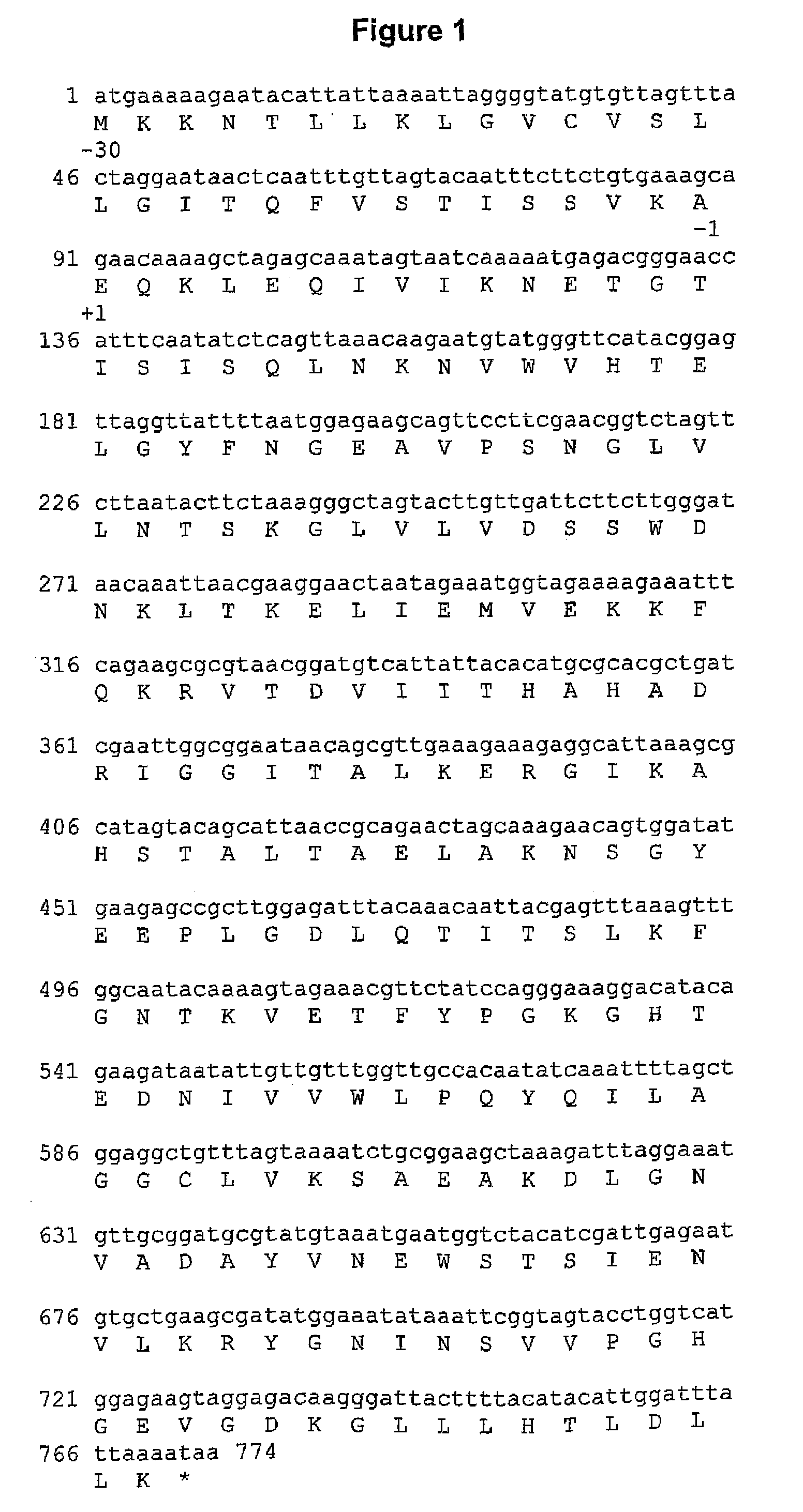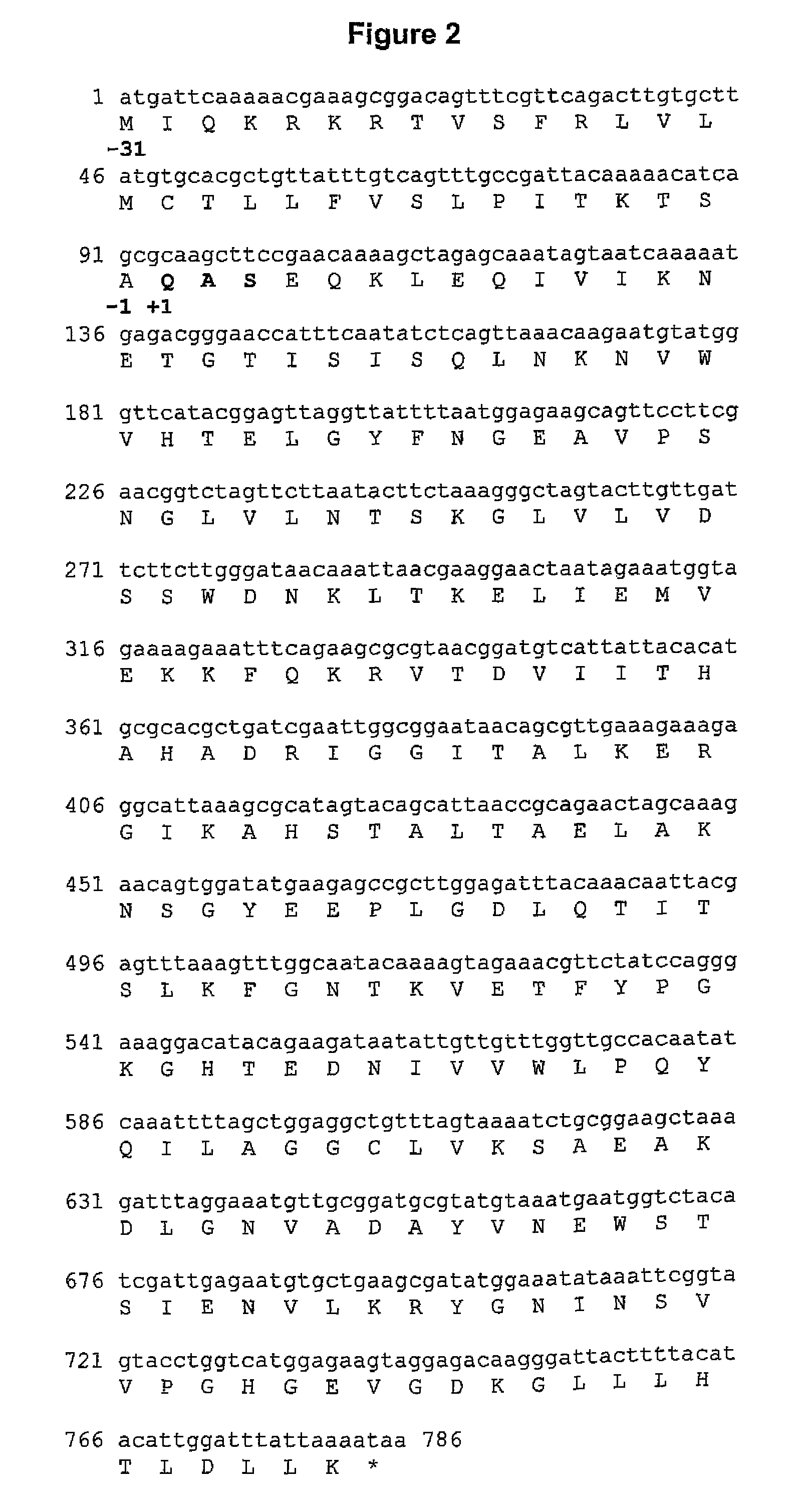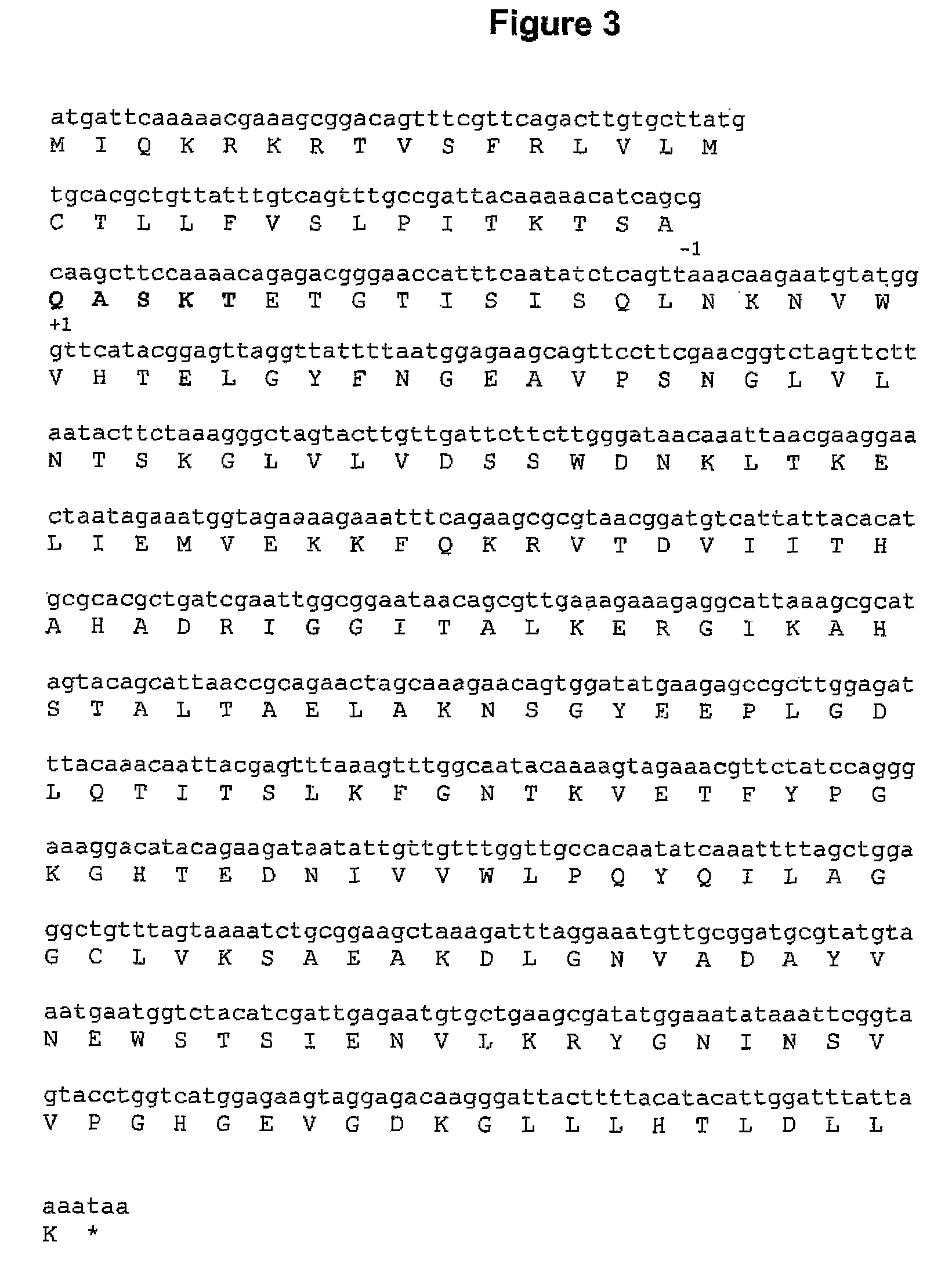Modified beta-lactamase and method for its preparation
a beta-lactamase and beta-lactamase technology, applied in the field of modified beta-lactamase and method for its preparation, can solve the problems of reducing the value of the enzyme, limiting the use of the enzyme as a drug substance, and difficult clinical trials
- Summary
- Abstract
- Description
- Claims
- Application Information
AI Technical Summary
Benefits of technology
Problems solved by technology
Method used
Image
Examples
example 1
Materials and Methods
Bacterial Strains and Growth Conditions
[0053]The bacterial strains and their relevant genotypes and phenotypes are presented in Table 2.
[0054]
TABLE 2Bacterial strains and their relevant genotypes and phenotypesStrainRelevant genotypeRelevant phenotypeBacillus subtilis RS303trpC2, sigG::catTryptophan auxotroph,(Δ sigG)asporogenicBacillus subtilis IH 6140sacA321Reduced exoproteaselevelBacillus subtilis RS314trpC2, sigG::cat, (Δ sigG)Tryptophan auxotroph,pRSH314 expression constructasporogenic, secretesencoding the truncatedmetallo-beta-lactamasemetallo-beta-lactamaseBacillus subtilis RS315trpC2, sigG::cat, (Δ sigG)Tryptophan auxotroph,pRSH315 expression constructasporogenic, secretesencoding the completemetallo-beta-lactamasemetallo-beta-lactamase geneBacillus subtilis RS317trpC2, sigG::cat, (Δ sigG)Tryptophan auxotroph,pRSH317 expression constructasporogenic, secretesencoding truncatedmetallo-beta-lactamasemetallo-beta-lactamaseBacillus subtilis RS318trpC2, sigG:...
example 2
The Complete Nucleotide Sequence of Bacillus cereus 98ME1552 Metallo-Beta-Lactamase Gene
[0062]The determination of the complete gene coding metallo-beta-lactamase was sequentially performed by using PCR and Vectorette techniques. Part of the structural gene was amplified by PCR, with isolated chromosomal DNA of a clinical isolate B. cereus 98ME1552 as a template and with primers designed to hybridize to the SQKVEKTVI (SEQ ID NO:19) coding region (forward primer) and HTLDLL (SEQ ID NO:20) coding region (reverse primer) of the Bacillus cereus 569 / H metallo-beta-lactamase gene. Both primers also carry Hind III restriction sites. The amplified DNA fragment (about 700 bp) was digested with Hind III and ligated to the Hind III site of a secretion vector pKTH141. Competent Bacillus subtilis IH6140 cells were transformed with the ligation mixture. A clone harboring a plasmid expressing metallo-beta-lactamase was verified by DNA sequencing. The plasmid was named pRSH314.
[0063]Competent B. su...
example 3
Cloning and Expression of the B. cereus 98ME1552 Metallo-Beta-Lactamase Gene in Bacillus subtilis
[0066]Based on the obtained DNA sequences from the Vectorette library new primers,
[0067]
BLC1-F(5′-CGCGAAGCTTCCGAACAAAAGCTAGAGCAAATAGTAATC),andBLC1-R(5′-GCCGAAGCTTTTATTTTAATAAATCCAATGTATGTAAAAGTAATCCC)
were designed to generate a DNA insert encoding the complete metallo-beta-lactamase in PCR. The primers also carried Hind III-sites at their ends and purified chromosomal DNA of B. cereus 98ME1552 was used as a template. The amplified PCR fragment of about 0.7 kb was digested with Hind III and ligated to the Hind III site of a pKTH141 secretion vector. Competent Bacillus subtilis RS303 cells were transformed by the ligation mixture. One positive clone was designated RS315 and the harboring expression construct was named pRSH315.
[0068]The pRSH315 expression construct was isolated and the insert region was sequenced. The nucleotide and deduced amino acid sequences of the cloned metallo-beta-l...
PUM
| Property | Measurement | Unit |
|---|---|---|
| molecular mass | aaaaa | aaaaa |
| secondary structure | aaaaa | aaaaa |
| pharmaceutical composition | aaaaa | aaaaa |
Abstract
Description
Claims
Application Information
 Login to View More
Login to View More - R&D
- Intellectual Property
- Life Sciences
- Materials
- Tech Scout
- Unparalleled Data Quality
- Higher Quality Content
- 60% Fewer Hallucinations
Browse by: Latest US Patents, China's latest patents, Technical Efficacy Thesaurus, Application Domain, Technology Topic, Popular Technical Reports.
© 2025 PatSnap. All rights reserved.Legal|Privacy policy|Modern Slavery Act Transparency Statement|Sitemap|About US| Contact US: help@patsnap.com



